


When tackling rugged gravel trails or enduring long-distance rides, ensuring your comfort on a gravel bike becomes paramount.
“How to make a gravel bike more comfortable” isn’t just a question; it’s a quest for a smoother, less fatiguing, and enjoyable riding experience. In this detailed introduction, we’ll explore various strategies and adjustments that can transform your gravel bike into a plush, comfort-focused machine.
Gravel biking is all about adventure and exploration, but it doesn’t mean you have to sacrifice comfort for the thrill of the ride.
Whether you’re planning epic gravel tours or simply want to enjoy your local gravel routes with less discomfort, we’ll delve into the key aspects of bike setup, gear, and riding techniques that can significantly enhance your comfort on the gravel.
From tire choices and pressure adjustments to ergonomic handlebars, proper bike fit, and smart gear selection, we’ll uncover the secrets to a more comfortable gravel biking experience.
So, let’s embark on this journey to discover how to make a gravel bike more comfortable and ensure that every ride leaves you with a smile on your face.
Read More: How to make my gravel bike faster
Tire Choice and Pressure
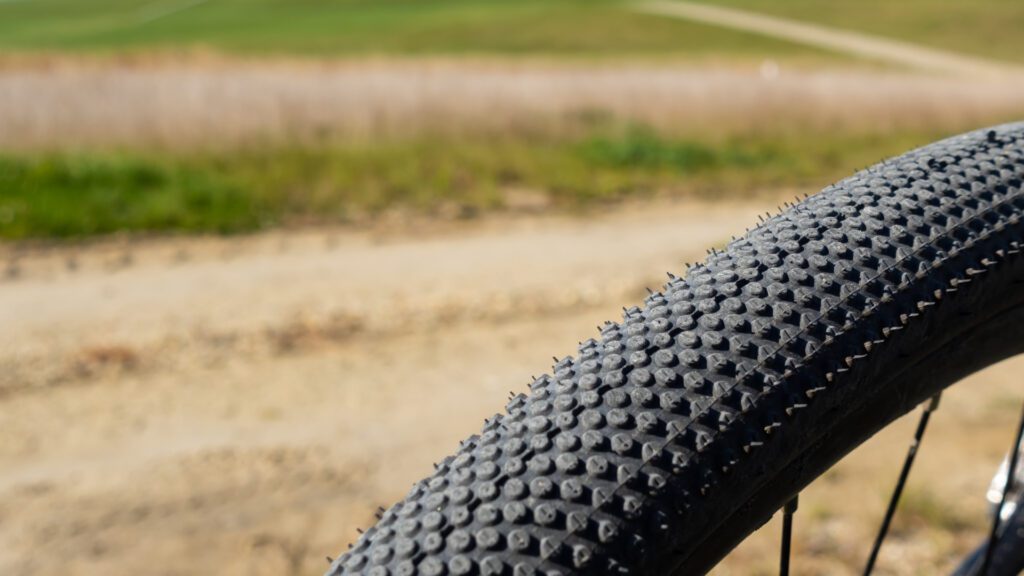


Tire choice and tire pressure are pivotal factors that influence the comfort and performance of your gravel bike. In this detailed explanation, we’ll explore how these elements can significantly enhance your gravel biking experience:
Read More: How to build a gravel bike
Tire Width
The width of your gravel bike tires is a critical consideration. Wider tires, typically ranging from 35mm to 45mm or more, offer several comfort advantages.
They provide a larger contact patch with the ground, distributing your weight more effectively and reducing the impact of rough terrain. This wider footprint also enhances stability, especially on loose or uneven surfaces.
Tread Pattern
Tire tread patterns vary widely, and your choice should align with the type of gravel riding you do. Tires with aggressive, knobby treads excel in challenging off-road conditions, offering superior traction in mud, sand, and loose gravel.
For smoother gravel roads, tires with a less pronounced tread pattern can provide a quieter and more efficient ride.
Tubeless vs Tubed Tires
Tubeless tires have gained popularity in gravel biking for several reasons, including improved comfort. They allow you to run lower tire pressures without the risk of pinch flats, which can make your ride smoother and more forgiving.
Lower pressures let the tire deform to the terrain, providing better grip and shock absorption.
Tire Pressure
Finding the right tire pressure is a nuanced process. Lower pressures (usually in the range of 30-40 psi for gravel) can enhance comfort by allowing the tire to flex and conform to the road surface.
This absorbs vibrations and reduces the impact of rough terrain on your body. However, tire pressure should also consider your weight, riding style, and the specific gravel conditions you encounter. Experiment with different pressures to find the perfect balance between comfort and performance.
Terrain-Specific Considerations
Adjust your tire choice and pressure to match the terrain you’ll be riding. Softer, looser gravel necessitates lower pressures for improved traction and comfort. In contrast, harder-packed gravel can accommodate slightly higher pressures for better rolling efficiency.
Suspension Systems
Some gravel bikes come equipped with suspension systems, such as front fork suspension or seatpost suspension. These components absorb impacts and vibrations, significantly enhancing ride comfort, especially on rough or rocky gravel roads.
Regular Maintenance
Don’t overlook tire maintenance. Regularly inspect your tires for wear, cuts, or punctures. Maintaining proper tire condition ensures consistent performance and comfort on your rides.
Accessories
Consider adding tire inserts or liners to reduce the risk of punctures, particularly if you frequently ride in rugged terrain. These accessories provide an extra layer of protection and contribute to a more worry-free and comfortable ride.
In summary, the interplay between tire choice and pressure is a crucial factor in optimizing your gravel biking experience for comfort and performance.
By selecting the right tire width, tread pattern, and pressure, you can enhance your bike’s ability to absorb shocks, maintain traction, and roll efficiently on gravel roads, ultimately making your rides more enjoyable and less fatiguing.
Saddle Selection and Positioning
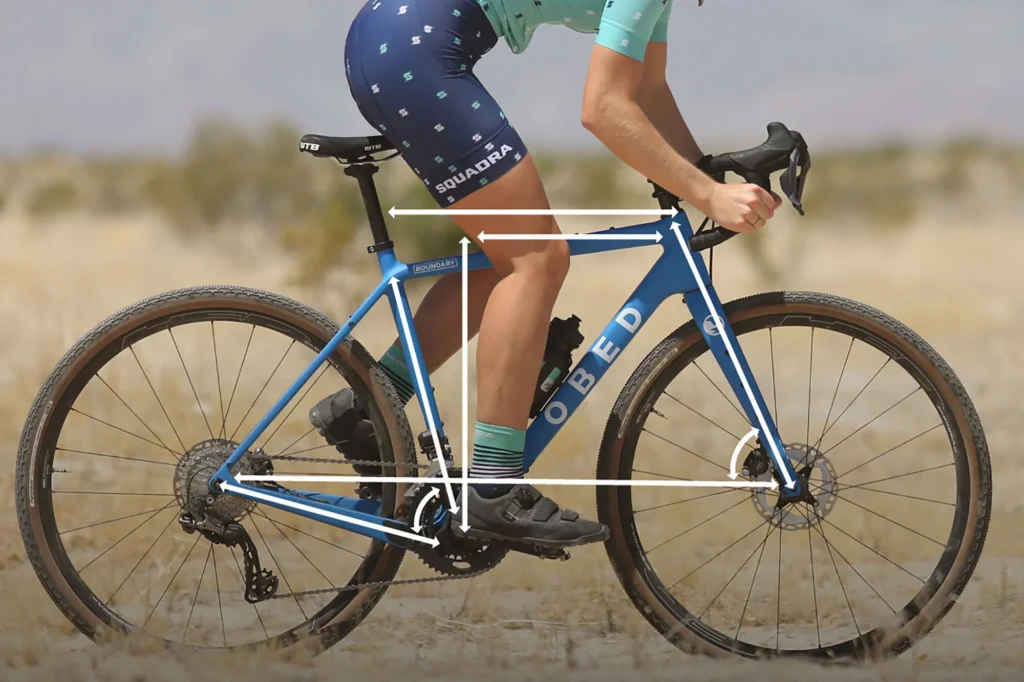


Saddle selection and positioning are critical factors in ensuring a comfortable and enjoyable gravel biking experience. Here’s an in-depth explanation of how these aspects can significantly impact your overall comfort:
Read More: Why Are Gravel Bikes So Expensive
Saddle Shape
Saddles come in various shapes, each designed to accommodate different riding styles and body types. The shape of your saddle affects how your weight is distributed and how you sit on the bike.
For gravel riding, a saddle with a moderate level of curvature is often a good choice.It provides support without restricting your movement.
Saddle Width
The width of your saddle is crucial for comfort. It should match the width of your sit bones. Wider sit bones require a wider saddle, and vice versa. An improperly sized saddle can lead to discomfort, numbness, and chafing.
Many bike shops offer sit bone measurements to help you choose the right width.
Cutouts and Relief Channels
Some saddles feature cutouts or relief channels in the center. These are designed to alleviate pressure on sensitive areas, such as the perineum. For long gravel rides, especially on rough terrain, a saddle with a cutout or relief channel can reduce the risk of numbness and discomfort.
Padding
Saddle padding varies from minimal to plush. Gravel riders often prefer a saddle with moderate padding. Too much padding can absorb shock and vibrations from rough terrain, but excessive padding can lead to chafing and discomfort. It’s essential to strike a balance that suits your comfort preferences.
Materials
Saddles can be made from various materials, including synthetic, leather, and carbon. Leather saddles are known for their comfort over time as they conform to your body shape.
However, they may require more maintenance. Synthetic saddles are durable and easier to care for. Consider the material’s durability and maintenance requirements when making your choice.
Saddle Tilt
The angle at which your saddle is tilted can greatly affect comfort. A level saddle is a good starting point, but slight adjustments may be necessary. A saddle that’s tilted too far upward can lead to discomfort in the perineal area, while a nose-down tilt may increase pressure on your hands and arms.
Experiment with small angle adjustments to find your optimal position.
Saddle Height and Fore-Aft Position
Proper saddle height and fore-aft positioning are crucial for comfort and pedaling efficiency. Adjust your saddle height so that your leg is nearly fully extended at the bottom of your pedal stroke without rocking your hips.
Fine-tune the fore-aft position to align your knees over your pedals when your crank arms are horizontal. A professional bike fit can assist in achieving these adjustments accurately.
Saddle Angle
The angle at which your saddle is tilted can significantly impact comfort. A saddle that’s too nose-up can increase pressure on your hands and arms, while a nose-down saddle can lead to discomfort in the genital area. Aim for a neutral saddle angle, with slight adjustments if needed for comfort.
Comfort Testing
Always test your saddle selection and positioning on shorter rides before embarking on long gravel adventures. What feels comfortable initially may change during extended rides, so be prepared to make minor adjustments to ensure ongoing comfort.
In summary, saddle selection and positioning are highly individualized aspects of gravel biking comfort. Finding the right saddle shape, width, and position is crucial for preventing discomfort and enhancing your riding experience.
Invest time in the selection and fine-tuning of your saddle to ensure that your gravel rides are enjoyable, pain-free, and comfortable, even on rugged and uneven terrain.
Handlebars and Grips



Handlebars and grips play a pivotal role in ensuring your gravel bike provides a comfortable and enjoyable riding experience. Here’s a detailed explanation of how these components contribute to comfort during gravel biking:
Read More: Can you turn a road bike into a gravel bike
Handlebar Types
Gravel bikes can be equipped with various handlebar types, each offering unique benefits:
Drop Bars: Drop bars are a popular choice for gravel biking. They provide multiple hand positions, including the drops for aero efficiency, the hoods for a relaxed posture, and the tops for a more upright stance.
This versatility allows you to adapt to different terrain and riding conditions, reducing fatigue on long rides.
Flat Bars: Flat bars offer a more upright riding position, similar to mountain bikes. They provide straightforward control and steering, making them suitable for technical gravel trails and riders who prefer a more upright posture.
Aero Bars: Aero bars are less common but can be beneficial for long-distance gravel racing. They allow you to assume a more aerodynamic position, reducing wind resistance and fatigue on straight and flat sections of gravel roads.
Handlebar Width
The width of your handlebars can impact your comfort and control. Wider handlebars provide better leverage and control on rough terrain, enhancing stability. However, excessively wide bars can strain your shoulders.
Opt for a width that matches your shoulder width for optimal comfort and control.
Handlebar Material
Handlebars can be made from materials like aluminum, carbon fiber, or steel. Carbon fiber handlebars are known for their vibration-damping properties, which can reduce road buzz and discomfort on rough gravel roads.
However, they can be pricier than aluminum or steel options.
Grips and Tape
The grips or bar tape you choose can significantly affect comfort and hand fatigue. Ergonomic grips with padding provide better hand support and reduce pressure points. High-quality bar tape can absorb vibrations and enhance grip, making for a more comfortable and secure riding experience.
Handlebar Positioning
Proper handlebar positioning involves setting the bar height, angle, and reach to suit your body and riding style. Experiment with these adjustments to find a comfortable and ergonomic position that minimizes strain on your wrists, arms, and back.
Shock-Absorbing Features
Some handlebars come equipped with shock-absorbing features like built-in suspension or elastomer inserts. These features can help dampen vibrations and reduce discomfort on rough gravel roads.
Hand Positions
Regardless of your handlebar type, learn to use multiple hand positions during your gravel rides. Shifting your hands from the tops to the drops or hoods and back can alleviate pressure points and reduce hand fatigue on long rides.
Handlebar Accessories
Consider adding accessories like bar ends or aero extensions to your handlebars to provide additional hand positions and improve aerodynamics. These can be particularly useful for riders seeking more comfort and versatility during long gravel adventures.
In summary, handlebars and grips are critical components of your gravel bike setup that directly impact your comfort and control. The choice of handlebar type, width, material, grips, and proper positioning can make a significant difference in your overall riding experience.
Prioritize comfort and adaptability to ensure that your gravel biking ventures are both enjoyable and fatigue-free, no matter the terrain you encounter.
Bike Fit



Achieving the right bike fit is essential for maximizing comfort and performance during gravel biking. Here’s a comprehensive explanation of how bike fit factors into your overall comfort:
Frame Size
The first step in achieving a proper bike fit is selecting the right frame size. Gravel bike frames come in various sizes to accommodate different rider heights. Riding a bike that’s too big or too small can lead to discomfort and decreased control. Consult a bike sizing chart or get professionally fitted to ensure you choose the correct frame size.
Saddle Height
Proper saddle height is critical for comfort and pedaling efficiency. When your leg is nearly fully extended at the bottom of the pedal stroke without rocking your hips, you’ve found the right saddle height. This minimizes strain on your knees and maximizes power transfer.
Saddle Fore-Aft Position
The fore-aft position of your saddle determines your riding posture. Adjust the saddle’s position to align your knees over your pedals when your crank arms are horizontal. This optimizes pedaling efficiency and reduces the risk of discomfort and knee pain.
Handlebar Height
The height of your handlebars affects your riding posture. Gravel riders often prefer a slightly more upright position compared to road cyclists. Adjust the handlebar height to achieve a comfortable balance between aerodynamics and comfort.
This helps reduce strain on your back and neck during long rides.
Handlebar Reach
Handlebar reach refers to the horizontal distance between your saddle and handlebars. It influences your upper body’s position on the bike. Adjust the reach to ensure a comfortable and balanced riding posture.
Gravel bikes often have longer top tubes, which can affect reach compared to road bikes.
Stem Length
The stem length can fine-tune your bike’s fit. A shorter stem can make the bike feel more responsive and nimble, while a longer stem provides stability. Choose a stem length that complements your desired riding style and comfort preferences.
Cleat Position
If you use clipless pedals, the position of your cleats affects your foot’s alignment and comfort. Ensure that your cleats are positioned correctly to prevent knee and foot discomfort. Cleat position can be adjusted both laterally and rotationally.
Suspension Settings
If your gravel bike is equipped with front suspension or a suspension seatpost, adjust the suspension settings to match your weight and riding conditions. Proper suspension setup can significantly improve comfort on rough terrain.
Professional Bike Fit
For the most precise bike fit, consider investing in a professional bike fitting session. A bike fit expert can use advanced tools and techniques to fine-tune your bike’s setup, ensuring optimal comfort, efficiency, and injury prevention.
Regular Adjustments
Keep in mind that your body and riding preferences may change over time. Periodically review and adjust your bike fit to accommodate any changes in your fitness level, flexibility, or riding style.
In summary, achieving the right bike fit is crucial for gravel bike comfort. A well-fitted bike minimizes the risk of discomfort, pain, and injuries during your gravel adventures.
Take the time to fine-tune your bike’s settings and consider professional assistance for an optimized fit that enhances both comfort and performance on the diverse terrain of gravel riding.
Gear and Accessories
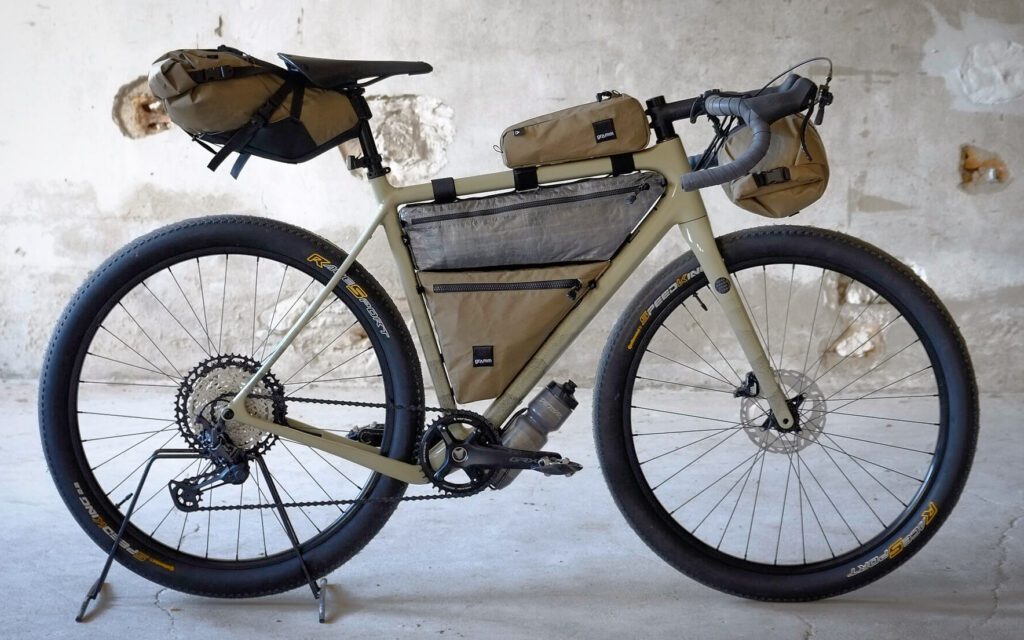


Selecting the right gear and accessories for your gravel bike can significantly improve your comfort and enjoyment during rides. Here’s a detailed explanation of how gear and accessories can contribute to a more comfortable gravel biking experience:
Apparel
Choose appropriate cycling apparel designed for gravel riding. Moisture-wicking jerseys and shorts help manage sweat, while padded shorts provide cushioning for long rides. Consider layering options to adapt to changing weather conditions.
Footwear
Invest in comfortable cycling shoes that match your pedal system (clipless or flat pedals). Proper footwear can enhance pedal efficiency and reduce foot fatigue. Ensure a secure fit and breathable materials to prevent discomfort.
Gloves
Cycling gloves offer grip, protection, and shock absorption. Opt for gloves with padded palms to reduce hand fatigue and discomfort, especially on rough terrain.
Eyewear
Sunglasses or clear lenses protect your eyes from dust, debris, and UV rays. They also enhance visibility in varying light conditions, improving safety and comfort.
Helmet
Always wear a well-fitting helmet for safety and comfort. Look for helmets with ample ventilation to keep your head cool during long rides.
Hydration Systems
Staying hydrated is crucial for comfort and performance. Use a hydration pack, water bottles, or a combination of both to ensure you have easy access to fluids on the go.
Nutrition
Carry energy gels, bars, or real food for sustained energy during long gravel rides. Proper nutrition can prevent bonking and maintain your comfort and stamina.
Bike packing Bags
If you’re embarking on multi-day gravel adventures, bike packing bags allow you to carry essential gear and supplies. These bags are designed to fit your bike securely and efficiently distribute weight, ensuring a balanced and comfortable ride.
Lights
Gravel riding can take you into low-light or dark conditions. Ensure you have reliable front and rear lights for safety and visibility. Choose lights with adjustable brightness and long battery life for extended rides.
Repair and Maintenance Tools
Carrying a basic tool kit for on-the-go repairs can prevent discomfort from being stranded due to mechanical issues. Include essentials like tire levers, spare tubes, a multi-tool, and a mini-pump or CO2 inflator.
First Aid Kit
Accidents can happen on the trail. A compact first aid kit can provide immediate relief for minor injuries and discomfort.
GPS/Navigation
Navigation devices or smartphone apps can help you plan and follow routes, preventing the discomfort of getting lost or stranded.
Bike Comfort Accessories
Consider additions like bar ends, ergonomic grips, or gel saddle covers to enhance comfort during long rides. These small adjustments can reduce fatigue and discomfort.
Bike Maintenance
Regularly service your bike to ensure it performs optimally. Well-maintained drivetrain components, brakes, and suspension systems contribute to a smoother and more comfortable ride.
Bike Fit Accessories
Additional bike fit components, such as saddle fit systems, handlebar extensions, and custom insoles, can further tailor your bike to your body, reducing the risk of discomfort and injuries.
By carefully selecting the right gear and accessories for your gravel biking adventures, you can enhance your comfort, safety, and overall riding experience. Prioritize high-quality, durable gear that suits your riding style and conditions to ensure that every gravel ride is a comfortable and enjoyable one.
Suspension Components
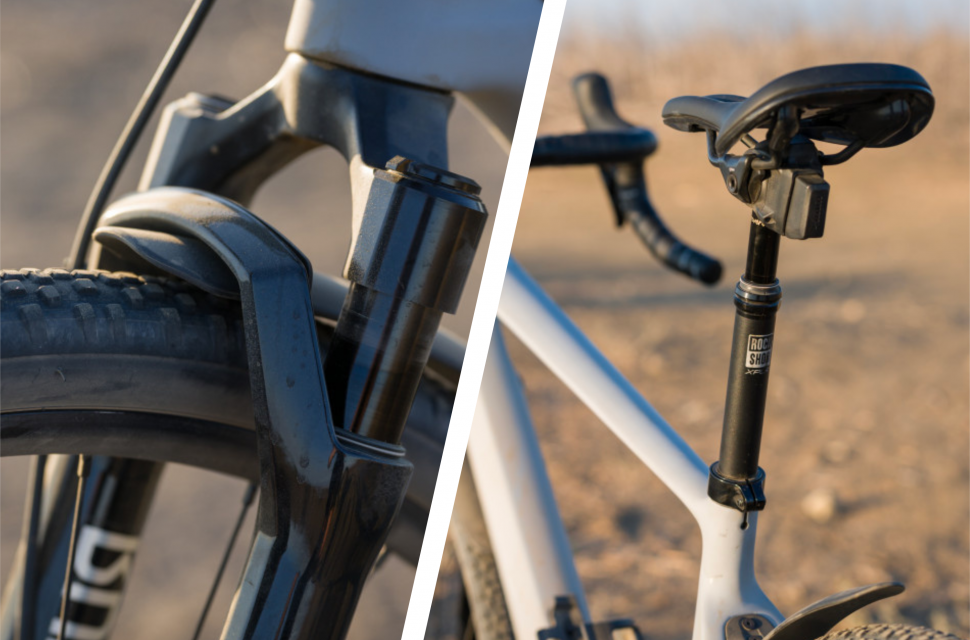


Suspension components can significantly enhance comfort and control during gravel biking, especially when navigating rugged and uneven terrain. Here’s a detailed explanation of how suspension components contribute to a more comfortable gravel biking experience:
Front Suspension Fork
Many gravel bikes are equipped with front suspension forks, also known as “gravel suspension forks.” These forks feature a suspension mechanism that can absorb impacts from the front wheel hitting bumps, rocks, and uneven terrain. Here’s how they enhance comfort:
Shock Absorption: The suspension fork absorbs shocks and vibrations, reducing the impact transferred to your arms and upper body. This minimizes fatigue and discomfort during long rides.
Traction: Improved front-wheel traction on uneven surfaces enhances control and stability, allowing you to maintain a more comfortable riding position, especially on challenging descents.
Smoothing Out Rough Terrain: Suspension forks help smooth out rough gravel roads and trails. This results in a smoother, more comfortable ride and reduces the risk of hand and arm fatigue.
Suspension Seat post
Some gravel riders opt for suspension seat posts. These seat posts feature a suspension mechanism that can absorb impacts transmitted through the rear wheel and saddle. They enhance comfort by:
Reducing Vibration: A suspension seat post dampens vibrations from rough terrain, preventing them from reaching your lower back and spine. This can reduce discomfort and lower back fatigue on extended rides.
Shock Absorption: When you encounter larger bumps or potholes, a suspension seat post can absorb the shock, providing a more comfortable and controlled ride.
Tire Choice and Pressure
While not traditional suspension components, your tire choice and pressure play a vital role in your bike’s overall comfort and performance:
Wider Tires: Opting for wider gravel tires (typically 35mm to 45mm or more) offers more cushioning and better absorption of small bumps and imperfections, significantly enhancing comfort.
Tubeless Setup: Tubeless tires allow you to run lower tire pressures without the risk of pinch flats. This not only improves traction but also enhances comfort by allowing the tire to deform and conform to the terrain.
Rear Suspension
While rear suspension is less common on gravel bikes, some models offer rear suspension systems. These can further enhance comfort by absorbing impacts from the rear wheel, similar to front suspension forks. However, rear suspension systems are more commonly found on dedicated gravel and adventure bikes.
Suspension Lockout
Some suspension forks and seat posts come with a lockout feature. This allows you to toggle between a fully active suspension and a locked-out position, where the suspension is rigid. Locking out the suspension can be beneficial when you’re riding on smooth roads, providing a more efficient and comfortable experience.
In summary, suspension components can make a substantial difference in gravel bike comfort by absorbing shocks, reducing vibrations, and enhancing traction and control.
Choosing the right suspension setup for your riding style and terrain can greatly contribute to a comfortable and enjoyable gravel biking experience, whether you’re tackling rough trails or embarking on long-distance gravel adventures.
Maintenance Tips
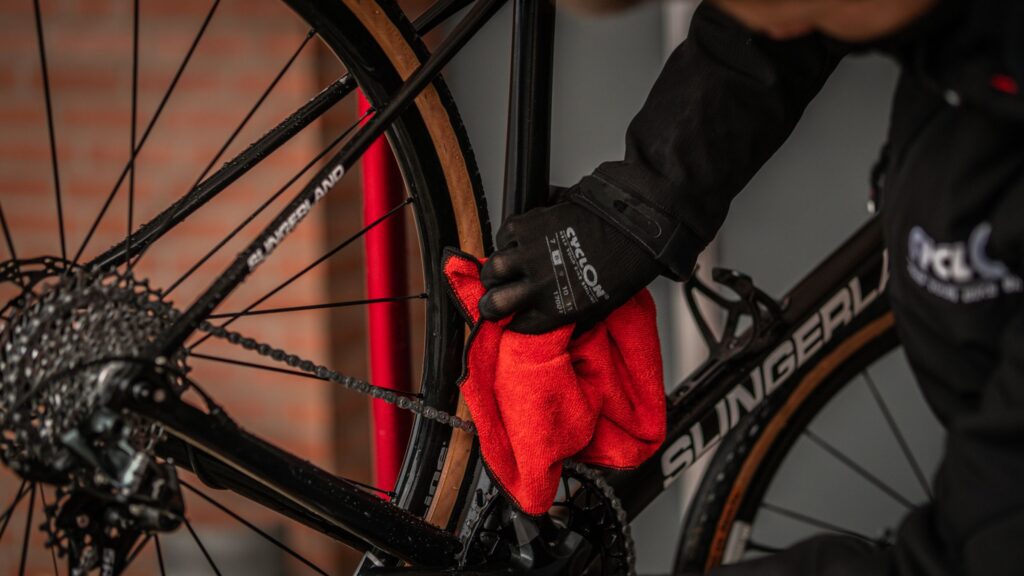


Maintaining your gravel bike is essential not only for its longevity but also for your comfort and safety while riding on varied terrain. Here’s a detailed explanation of maintenance tips that can enhance both comfort and performance during gravel biking:
Regular Cleaning
Gravel roads often introduce dirt, dust, and debris to your bike. Regularly clean your bike, including the drivetrain, frame, and wheels, to prevent excess wear and maintain smooth operation. A clean bike is a more efficient and comfortable one.
Drivetrain Lubrication
Keep your chain and drivetrain well-lubricated. A properly lubricated drivetrain reduces friction, enhances shifting, and minimizes noise. It also prevents premature wear and tear, ensuring consistent performance.
Tire Maintenance
Check your tire pressure before each ride to ensure it matches your preferred pressure range and terrain. Maintaining the correct tire pressure improves comfort, traction, and control. Inspect your tires for cuts, punctures, and wear, and replace them as needed.
Brake Care
Gravel bikes often rely on disc brakes, which require regular maintenance. Check brake pad wear and replace them when they become too thin. Ensure that the brake calipers are aligned correctly for optimal braking performance and safety.
Suspension Setup
If your gravel bike has front suspension, maintain the suspension fork by following the manufacturer’s guidelines for service intervals. Keep an eye on the condition of the suspension seals and lubricate them as needed. Adjust the suspension settings based on your riding conditions and preferences.
Tighten Bolts and Components
Vibrations and rough terrain can cause bolts and components to loosen over time. Regularly inspect and tighten all bolts, including those on the handlebars, stem, saddle, and accessories, to prevent discomfort and potential safety hazards.
Chain and Cassette Inspection
Gravel riding can expose your drivetrain to grit and grime. Periodically inspect the chain and cassette for signs of wear and replace them when necessary. A well-maintained drivetrain ensures smooth and reliable shifting.
Check Bearings
Gravel bikes have numerous bearings in components like the headset, bottom bracket, and wheel hubs. Regularly check these bearings for smoothness and signs of wear. Re-grease or replace them as needed to maintain a comfortable and efficient ride.
Suspension Maintenance
If your gravel bike is equipped with suspension components, follow the manufacturer’s recommendations for servicing these parts. Properly maintained suspension enhances comfort and control on rough terrain.
Saddle and Handlebar Adjustment
Periodically check the saddle and handlebar position to ensure they’re still correctly adjusted for your comfort. Fine-tune these settings to maintain a comfortable riding posture.
Keep a Tool Kit
Carry a basic tool kit with essential items for on-the-go repairs and adjustments. This can prevent discomfort and inconvenience from mechanical issues during rides.
Professional Bike Service
Consider scheduling regular professional bike maintenance, especially if you frequently ride challenging gravel routes. A professional can perform thorough inspections, adjustments, and servicing to keep your bike in top condition.
By following these maintenance tips, you can ensure that your gravel bike remains in excellent working order, providing a comfortable and reliable riding experience on all types of terrain.
Regular maintenance not only enhances comfort but also extends the life of your bike and its components, ultimately contributing to a more enjoyable gravel biking journey.
Conclusion
In the quest to make a gravel bike more comfortable, you’ve explored a plethora of strategies and adjustments that can transform your riding experience on rugged and varied terrain.
From choosing the right frame and components to fine-tuning your bike fit and selecting the ideal gear and accessories, every aspect of your setup can influence comfort.
Remember, comfort is a personal journey. What works best for one rider may differ for another. It’s essential to experiment, listen to your body, and make gradual changes to find the perfect balance of comfort and performance for your gravel adventures.
By prioritizing wider tires, optimizing tire pressure, and considering suspension components, you can cushion the blows of rough gravel roads. Proper bike fit, handlebar and saddle adjustments, and the right gear ensure you’re well-positioned for long hours in the saddle without discomfort.
Maintenance is key too. Regular cleaning, lubrication, and component checks keep your bike running smoothly and comfortably. Carry a tool kit for on-the-go adjustments and repairs, so you’re prepared for any unexpected challenges.
In conclusion, making your gravel bike more comfortable is an ongoing process that involves a combination of equipment choices, adjustments, and maintenance. As you fine-tune your setup and tailor it to your preferences, you’ll discover that gravel biking becomes not just an adventure but a genuinely comfortable and enjoyable one.
Embrace the journey, adapt your bike to your needs, and let the gravel roads lead you to newfound comfort and excitement.
FAQ’s
How to make a gravel bike more comfortable
To make a gravel bike more comfortable, use wider tires with lower pressure, consider suspension components, adjust saddle and handlebar positions, maintain proper bike fit, and regularly service your bike.
Is a gravel bike comfortable?
Yes, a gravel bike can be comfortable. With the right setup, including tire choice, suspension, and bike fit adjustments, it can provide a comfortable ride on various terrains.
How should you sit on a gravel bike?
On a gravel bike, sit with a relaxed posture, keeping your back straight. Use a comfortable saddle height, slightly bent elbows, and a firm but not clenched grip on the handlebars for control and comfort.
Is gravel bike good for long rides?
Yes, gravel bikes are suitable for long rides. Their comfortable geometry, versatile tires, and stable handling make them ideal for covering extended distances on a variety of terrain.



Welcome to Bikegenics, where passion meets performance! We are a leading online destination for all things related to mountain biking, dedicated to providing you with top-notch gear, expert advice, and an immersive community to fuel your two-wheeled adventures. With a commitment to excellence and a deep love for the sport, we strive to elevate your biking experience to new heights.
